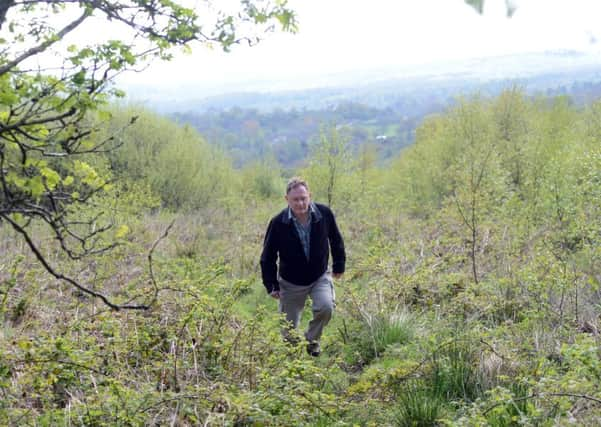Sheffield date to re-engage communities with precious woods


The common belief may be that there are huge amounts of wooded areas with meadows and pastures in the countryside and that you really do not have to go far to find somewhere to walk and enjoy, in reality that it is not always the case and there is a need to bring back wooded meadows not just for pleasure but for countryside dynamics.
Professor Ian Rotherham is chairman and organiser of the Wood Meadows and Wood Pastures Conference to be held at Sheffield Hallam University this month. It is open to anyone with an interest in re-wilding parts of the countryside and Ian believes the projects currently underway across the UK - and in particular in Yorkshire at Three Hagges Wood in Escrick - are setting the tone for future redevelopment of ancient woodland and re-engaging the public with nature.
Advertisement
Hide AdAdvertisement
Hide Ad“The excitement for me is that these are lost landscapes. Fantastic ancient woodlands and wood pastures came about from around the time of the Norman conquests. Sadly since more intensive farming developed from the 1700s and 1800s the lowlands and uplands have become more polarised. A thousand years ago wood pastures would have come from the lowlands all the way to the top of the hills. Upland tree orchards were another feature.
“Woodlands, pastures and heath commons have been shown to be incredibly clever ways of landscape management and early farm production methods. They gave the land wonderful biodiversity and a lifestyle for those who lived amongst them. They also gave us amazing bluebell scenes that today the public only generally sees in maintained parklands and municipal parks. It is wonderful to see them in their more natural, wilder state.
“We currently have a countryside that is fragmented and in some cases is, ecologically, on its knees. We’re now reaping the harvest that intensive agricultural practice has sown over past centuries that has culminated in catastrophic flooding in some areas. That’s one of the reasons why we need to look at alternative ways in which to manage the landscape.”
Although that grand aim is not about to be met overnight or is ever likely to see a wholesale change, engaging the public and local parish groups with the idea of creating beauty and enhancing wildlife with specific projects is a very real prospect.
Advertisement
Hide AdAdvertisement
Hide Ad“What we’d very much like to see come out of the conference is greater involvement, getting people to talk and network. We will have leading authorities speaking but we want to bring new people in and to make others aware of what can be done. I’d love to see a new woodland meadow or pasture in every parish.
“Rosalind Forbes Adam heads the Hagge Woods Trust at Escrick and will be providing a focus for the conference. It was established just five years ago and has become one of the bright shining lights.
“We’ve organised this specific event to share and celebrate what Ros and others are doing at Three Hagges Wood. They’ve taken 25 acres of what had been intensively farmed land and brought about what is effectively a model for others.”
Ros is delighted with what she and her team has achieved in such a short time.
Advertisement
Hide AdAdvertisement
Hide Ad“We started by planting the meadow and trees in Jubilee year 2012 and set out with the aim of making something that wasn’t full of brambles and nettles. We’ve succeeded and you could run barefoot in the meadow if you wanted.
“The number of species we have recorded is now up to 750, which is remarkable, and last year we introduced a bee hotel that has also created even greater species retention. We have over 250 plant species and we are continuing to enhance our numbers from hand collected seed.”
Other groups, including one in East Keswick, between Leeds and Wetherby, have projects underway and the conference will also see representation from the Forest of Dean and Suffolk. Ros is looking forward to seeing how Three Hagges Wood performs when its results are put through what is known as the Pantheon system.
“This assesses the quality of wood meadow sites and we will be told what they think of ours here at Escrick through a live demonstration. That’s quite daunting but we hope that what we’re doing here will inspire others to try too.”
Advertisement
Hide AdAdvertisement
Hide AdShe added: “My feeling is that you should plant fine grasses and wildflowers from a clean seedbed right at the start.”
FRESH IMPETUS
The Wood Meadows & Wood Pastures Conference takes place at Sheffield Hallam University on May 23-24 and will feature luminaries George Peterken, author of books on wood meadows and Chris Baines who has written about urban wildlife and meadow creation.
Ian Rotherham’s book ‘Shadow Woods – the search for lost landscapes’ will be available.
“We want the conference to encourage ordinary people to come along, meet, network and share so that everyone can go away to be champions for their own projects,” Ian said.